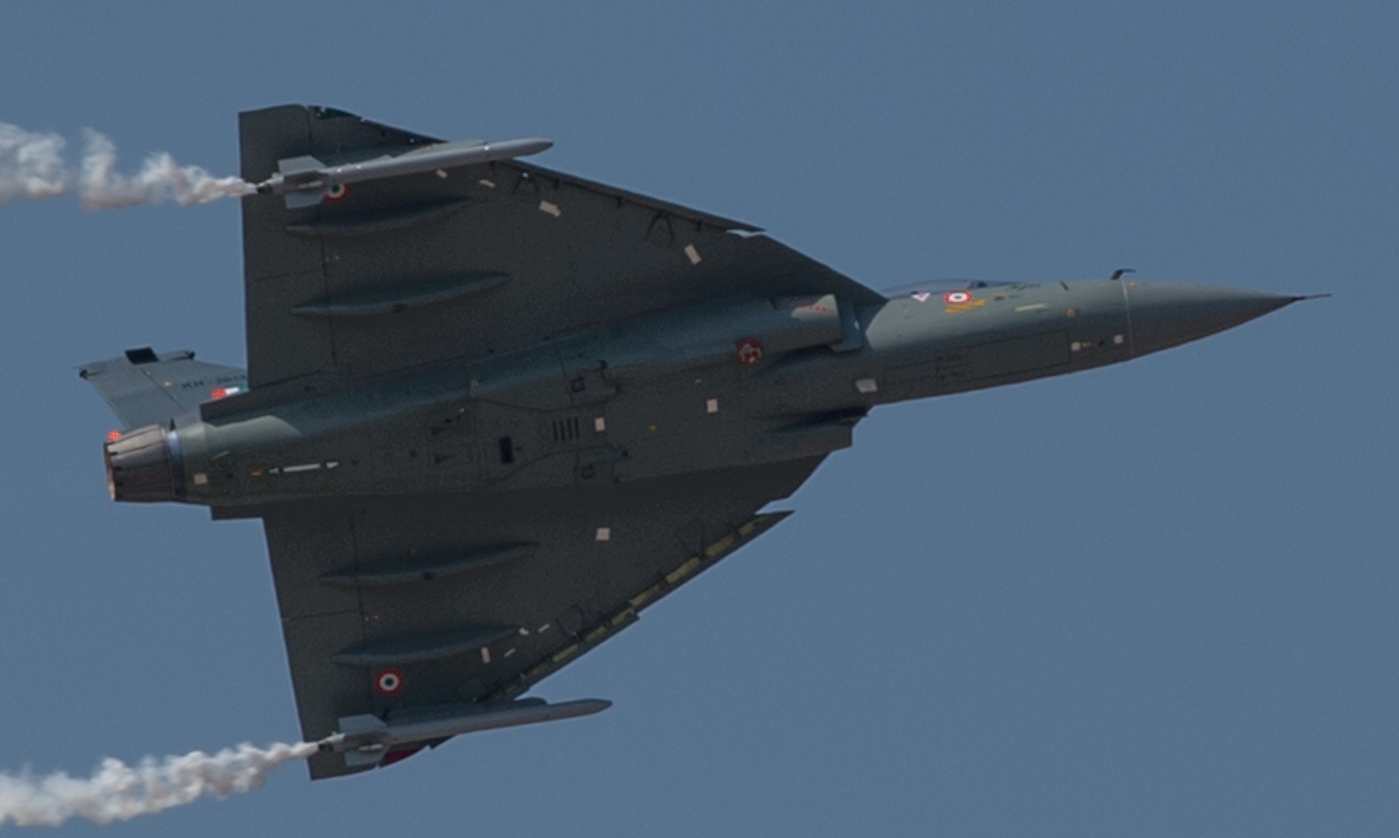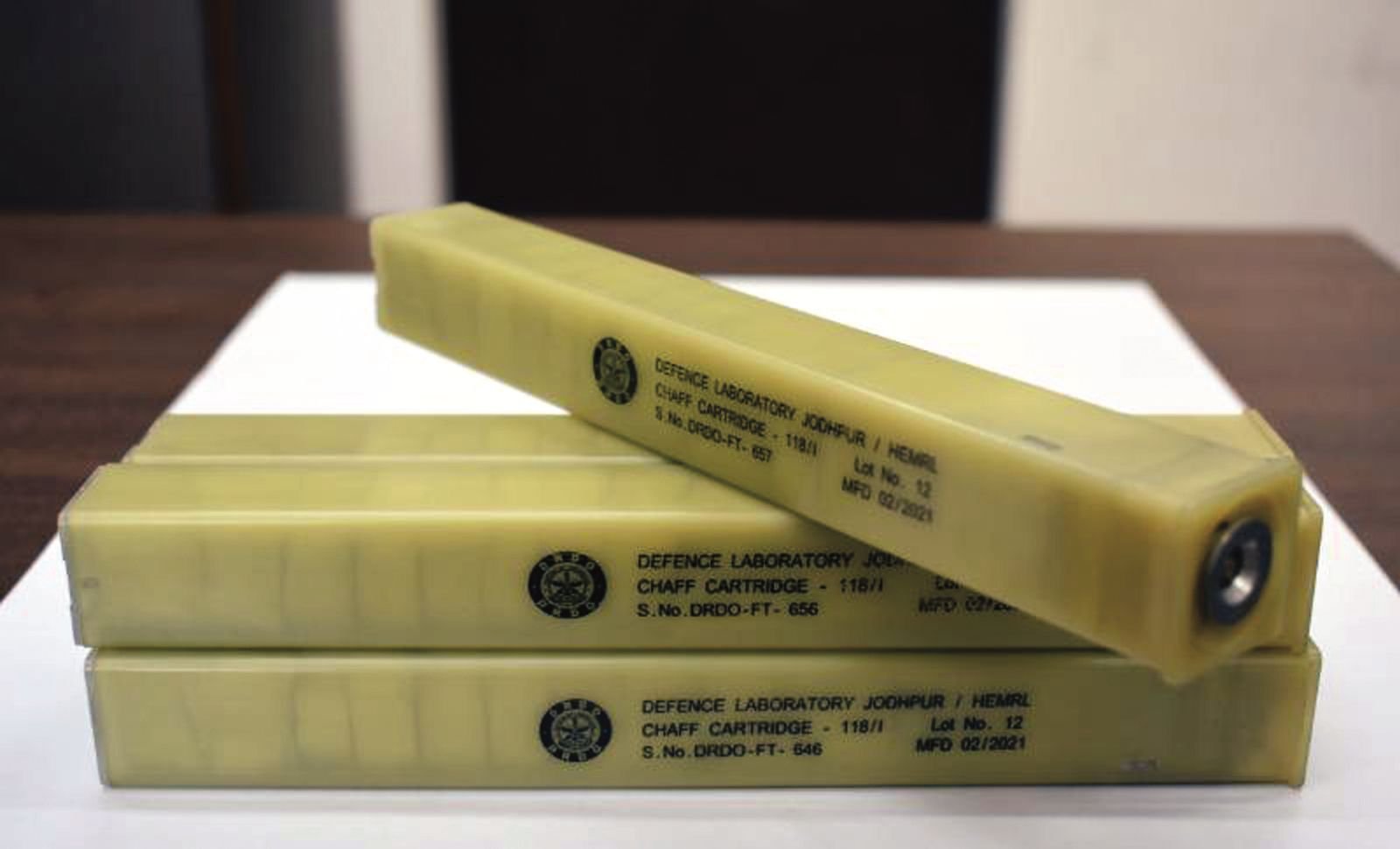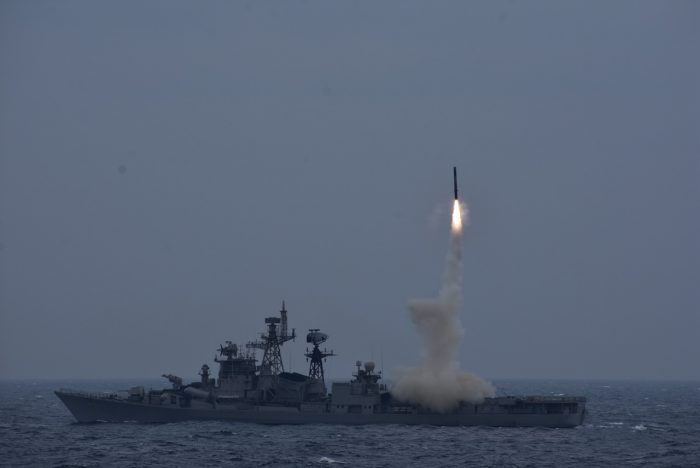India’s DRDO recently announced that it has “developed an advanced technology to safeguard fighter jets of the Indian Air Force against hostile radar threats”. The technology can be used on the indigenous HAL Tejas, according to experts.
The project was the result of collaboration between the DRDO’s Defence Laboratory in Jodhpur, and its Pune-based High Energy Materials Research Laboratory. Development into the advanced chaff material and chaff cartridge-118/I was carried out in the Jodhpur lab.
- Chinese J-20, Russian Su-57 Racing To Develop World’s 1st Stealth Fighter Jet With ‘Super Capabilities’
- Dream Come True For Aviation Enthusiasts As Microsoft Develops Platform To ‘Fly’ World’s Most Powerful Fighter Jet – F-35B
The Defence Research and Development Organisation (DRDO) claimed that the project has met the qualitative requirements of the IAF and that “The Indian Air Force has started the process of induction of this technology after completion of successful user trials.”
A DRDO statement highlighted, “In today’s electronic warfare, survivability of fighter aircraft is of prime concern because of advancement in modern radar threats. To ensure the survivability of aircraft, CounterMeasure Dispensing System (CMDS) is used which provides passive jamming against infra-red and radar threats.”

“The technology has been given to the industry for production in large quantities to meet the annual rolling requirement of the Indian Air Force,” it said. India’s Defense Minister Rajnath Singh lauded both the DRDO and IAF for developing this technology and described it as another step towards ‘Make in India’ in strategic defense technologies.
His view was echoed by DRDO chairman Dr. G Satheesh Reddy.
“The importance of this technology lies in the fact that very less quantity of chaff material deployed in the air acts as a decoy to deflect enemy’s missiles for ensuring the safety of the fighter aircraft,” Dr. Narendra Kumar Arya, Director Public Interface, DRDO, told The EurAsian Times.
What is Chaff Technology?
According to an aerospace analyst The EurAsian Times spoke with, “Chaff is the electronic equivalent of smoke and reflects electromagnetic energy to confuse or deceive an enemy system. Chaff materials of various sizes are packed into a container which is released by the aircraft to form an electronic cloud, thereby confusing the enemy.

“The challenge is to develop materials which are not bulky and have the capability to pack more of the material in the aircraft or reduce the space required for housing it. DRDO has precisely done this.”
Speaking on the condition of anonymity, a retired IAF fighter pilot told the EurAsian Times, “Chaff is like the name suggests, very thin filaments of a certain shape and length which reflects radar waves. It is filled in canisters and fired from the aircraft. When it is deployed it blooms behind the aircraft.”

“If a missile radar was tracking the aircraft, then the radar lock will be broken, and it will lock on to this bloomed cloud. Every frequency has a different shape and length of the chaff that will reflect the energy. If that technology is available indigenously, it will help India become ‘Atma Nirbhar’ [self-reliant],” the IAF veteran added.
Militaries around the world have deployed these electronic countermeasures to safeguard vital assets including aircraft and warships. Chaff technology protects them from both radar and radio frequencies. Chaff rockets are known to be deployed in naval vessels which confuse incoming munitions by acting as multiple targets in the eyes of an enemy missile.

India’s Defense Ministry had earlier indicated that the Jodhpur-based lab had developed three chaff rocket variants to meet the operational needs of the Indian Navy. The DRDO had developed short, mid, and long-range variants.
A salient feature of chaff technology is that only a marginal quantity of it needs to be deployed in the air to act as a decoy in order to ensure the relative safety of naval vessels.
- TALIBAN TERROR: China Conducts Counter-Terror Drills With Tajikistan; Afghan Embassy Declares Saleh The ‘New President’
-
US Air Force Deploys Powerful Spy Aircraft To Keep An Eye On Kabul; Only Russia, China Operate Such Jets
“The development of chaff systems for the Navy will provide a viable anti-radar homing missile passive defense, against such missiles which may leak through the active defensive systems.
Besides, local availability would provide for adequate stocks in rupee payments to hone formation tactics,” said Rear Admiral Vineet Bakhshi, VSM (Retd), a former Commanding Officer of INS Shivaji.
What Distinguishes Chaff From Flares?
Both chaff and flares are used as effective countermeasures against enemy missiles or irritate hostile radars aiming to locate and seek the positions of maritime assets such as ships. However, the difference lies in one mission-critical aspect.
Flares are known to fire a potent infrared source, which is designed to attract enemy heat-seeking missiles.
Chaff, on the other hand, does not. Instead, chaff which is made up of minute zinc or aluminum fibers works to confuse the radar on hostile munitions. This indigenous development marks yet another step towards providing indigenous countermeasures for naval and air force assets.
More @ EurAsian Times
- US Experiments With ‘Revolutionary Air Combat Training’ For Fighter Pilots To Dogfight Russian, Chinese Jets
- Despite J-20 Stealth Jet, Why Is China Keen To Acquire Another Stealth Fighter – Russian Su-57 To Its Arsenal?




